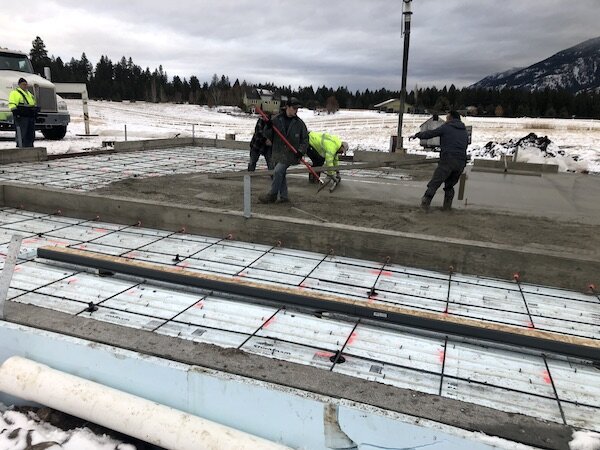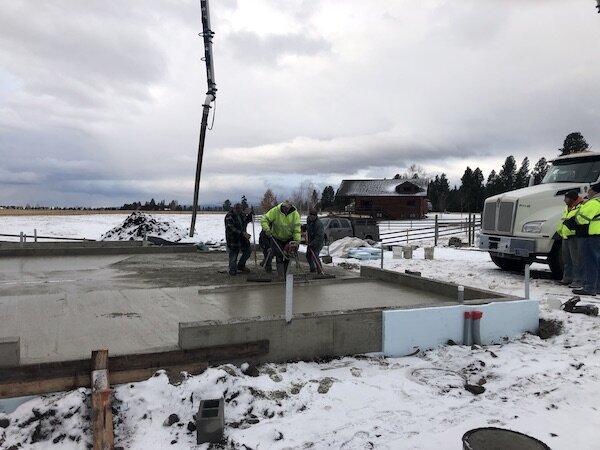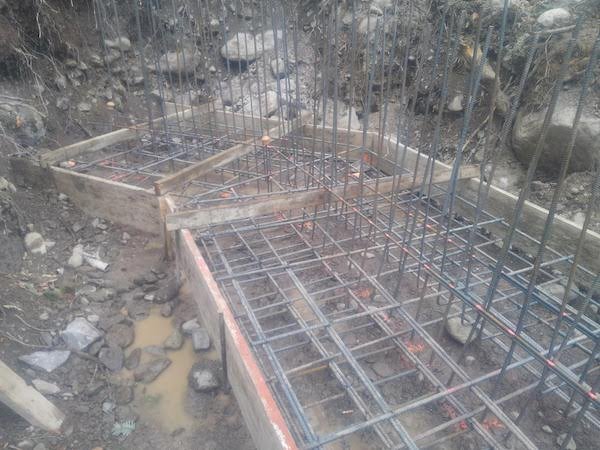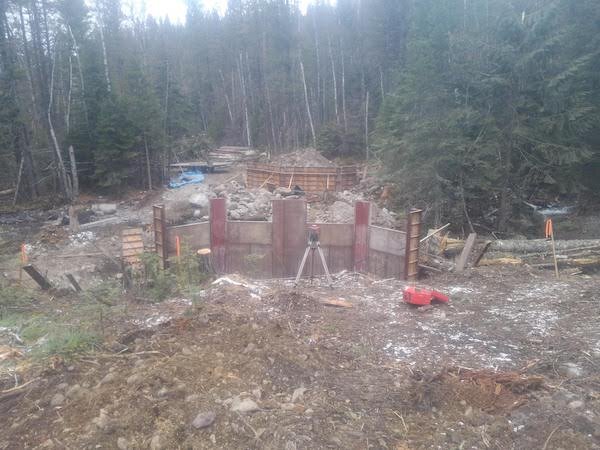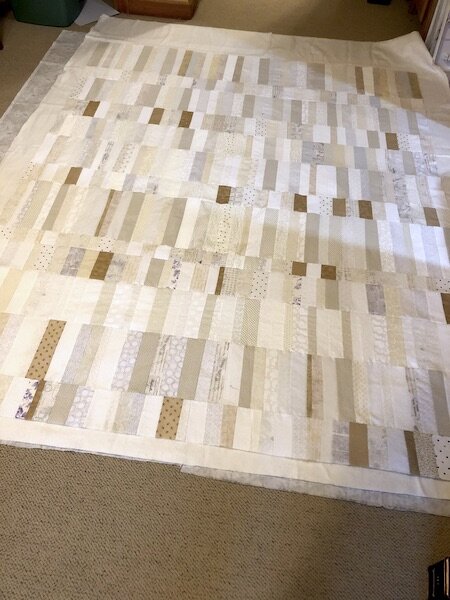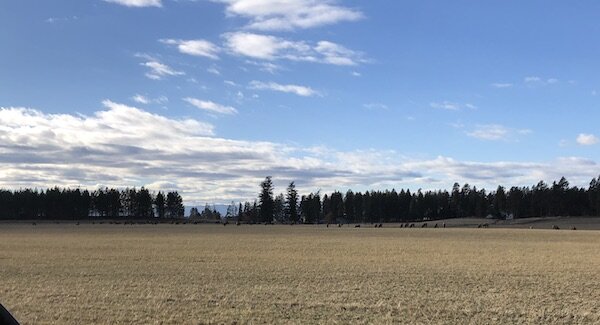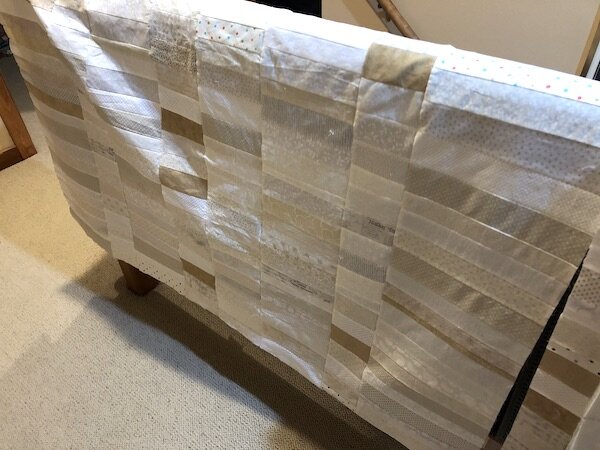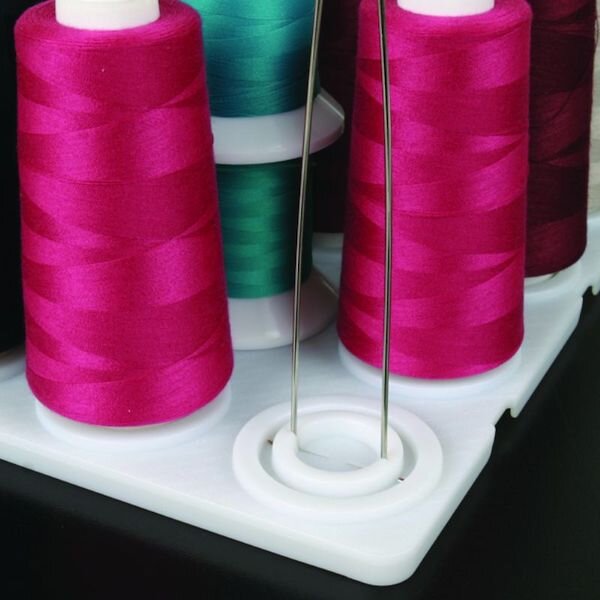I thought this was a multi-directional print because some of the sewing machines are upside down, and therefore did not pay attention when I was layering it with the batting and quilt. As I discovered when it was all quilted, however, there is a direction to this print. And I put it on the wrong way. Oh, well.
[I have some choice words for that fabric designer. Either make all the large motifs unidirectional or make all of them multidirectional.]
You can see the quilting on the backing. That’s 50wt Aurifil. The quilting on the front is nearly invisible, which is both good and bad. I wanted to use a monofilament there because there are so many colors in the quilt itself. If I had chosen a beige thread to blend in with the background, it would have stood out too much on the tomato. If I had chosen red to blend in on the tomato, it would have stood out on the background. In terms of blending in, the MonoPoly did what it was supposed to.
It’s much thinner, though, than anything I’ve used before. The Superior Threads website indicates that it’s a 100wt thread. It’s not awful to quilt with, although it’s so invisible that it’s hard to keep track of its location. I used a nonstick needle, which is a lifesaver with these appliqué pieces.
So what’s not to like? Well, the front of the piece doesn’t look like it’s quilted at all. At first I thought that was the fault of the thread, but I realized that the collage process results in a very stiff fabric. A stiff fabric combined with a thin monofilament results in a delicate grid of invisible thread lying on the surface. I wonder if using a heavier monofilament—Sailrite carries one that is approximately the same weight as regular sewing thread—would make a difference. Or maybe I should have used a 40wt pale pink cotton? Or a poly batting instead of cotton? I’d also be inclined to use something other than the Pattern-Ease as the foundation. What would the collage feel like if it were built on a thin lawn or muslin, instead? So many questions. Not enough time.
Interestingly, I ran across a blog post—after I had finished the quilting, of course—where the maker had added a layer of tulle over the top of the collage before quilting it. I thought that was a creative addition. It might be a pain to work with, but it would add another layer of texture. I think I might suggest it to Tera for her octopus collage.
The binding is some gray I pulled out of the binding box which coordinates nicely with the backing. I didn’t want to have to make binding just for this project.
I am glad I tried out the MonoPoly, as I am sure now that I don’t want to use it on Noon and Night, but I am still left with figuring out how I do want to quilt that top. I am leaning toward some dark gray thread that will blend in on both the black background and the colored stars. I could do black in the background sections and a variegated in the stars, but I am not sure my custom quilting skills are up to the task yet. I’m going to make some quilt sandwiches with the orphan blocks from the early part of the design process and experiment with them. I know Tera would do Noon and Night on the longarm for me, but I need to master some of these techniques on the Q20 and I’d like to try this myself. And I am not as much concerned with the quilting as I am with just getting this done and bound and ready to photograph for the pattern. Most people buy quilt patterns based on the design of the quilt, not because of the actual quilting.
I’ve got two Candy Coated quilts basted and ready for quilting. At some point, I also want to see what quilting a big quilt on the Q20 is like. I have a king size Scrapper’s Delight—also from Sunday Morning Quilts—that is ready to be basted with batting and backing, but it’s a bit further down the queue along with two other quilt tops that still have to be assembled.
******************************************************
I stopped in at Home Depot yesterday morning and bought lights for our porch. During the winter, we tend to get trapped under inversions, which make things very gloomy. Imagine cloudy, but a depressing gray cloudy close to the ground. Our house is at an elevation where sometimes the sun will break through. The valley, though, gets stuck under stagnant air until a system comes through and scours it out. (It’s why burning is closed until March, so the smoke doesn’t add to the problem.) For some reason, I feel like it’s important to have some cheerful lights up, this year more than ever.
I don’t have a good history with Christmas lights. I tried them the year after we built the house—the husband helpfully put hooks up on the porch rafters for me—but if I didn’t remember to turn them off before I dried my hair, the combination of the hair dryer on the same circuit as the lights tripped the breaker.
These are not Christmas lights, per se, but rather plain Edison bulb outdoor lights. And they are LED lights, which hopefully won’t draw as much current. We shall see. I might be looking for a different circuit for my hair dryer. I have to take down my wind chimes, but they can go into storage for the winter.




